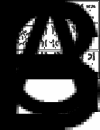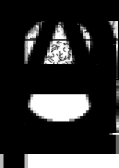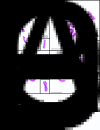New cytogenetic data on Caryophyllaeus laticeps and Paracaryophyllaeus gotoi, parasites of evolutionary interest
- PMID: 35535487
- PMCID: PMC11010498
- DOI: 10.1017/S0031182022000622
New cytogenetic data on Caryophyllaeus laticeps and Paracaryophyllaeus gotoi, parasites of evolutionary interest
Abstract
Caryophyllideans are intestinal parasites of freshwater fishes, occupying a basal position among the ‘true’ tapeworms. We performed detailed cytogenetic analyses of the well-known caryophyllidean species Caryophyllaeus laticeps. For comparison, we also examined for the first time the chromosomes of Paracaryophyllaeus gotoi, a specific parasite of loaches in China. Both species showed a diploid chromosome number of 2n = 20, n = 10m. Chromomycin A3 (CMA3)/diamidino-2-phenylindole (DAPI) staining performed for the first time in the class Cestoda revealed CMA3+/DAPI− bands in the pericentromeric regions of the short arms of chromosome pair no. 7 in the karyotype of C. laticeps. Fluorescence in situ hybridization with the 18S rDNA probe confirmed the presence of a single cluster of major rDNA near the centromere on a pair of small chromosomes in both species. These findings support the hypothesis that the ancestral state in the family Caryophyllaeidae is a single interstitial cluster of major rDNA genes and thus one nucleolar organizer region per haploid genome. Our results, which we presented together with literature data plotted on a phylogenetic tree, show stability of caryophyllidean karyotypes at the genus level, but showed differences between genera without a clear phylogenetic signal. The data allowed us to at least formulate a hypothesis about the ancestral haploid chromosome number of n = 10 for the family Caryophyllaeidae and possibly for the sister family Capingentidae. In addition, we compared two populations of C. laticeps from water bodies with different levels of polychlorinated biphenyl contamination, showing a slightly increased incidence of chromosomal abnormalities at the contaminated site.
Keywords: Chromosome aberration; FISH; environmental pollution; karyotype; karyotype evolution; ribosomal DNA.
Conflict of interest statement
The authors declare there are no conflicts of interest.
Figures








Similar articles
-
Karyotype and Repetitive DNA Analysis in Turcichondrostoma fahirae (Cypriniformes, Leuciscidae): A Step toward the Use of Molecular Cytogenetics in Taxonomy of Freshwater Fishes in Türkiye.Cytogenet Genome Res. 2025;165(1):39-50. doi: 10.1159/000544909. Epub 2025 Apr 2. Cytogenet Genome Res. 2025. PMID: 40174577
-
Phylogenetic reconstruction of early diverging tapeworms (Cestoda: Caryophyllidea) reveals ancient radiations in vertebrate hosts and biogeographic regions.Int J Parasitol. 2021 Mar;51(4):263-277. doi: 10.1016/j.ijpara.2020.09.009. Epub 2020 Dec 2. Int J Parasitol. 2021. PMID: 33275944
-
Chromosomal study of Khawia abbottinae (Cestoda: Caryophyllidea): karyotype and localization of telomeric and ribosomal sequences after fluorescence in situ hybridization (FISH).Parasitol Res. 2019 Oct;118(10):2789-2800. doi: 10.1007/s00436-019-06450-3. Epub 2019 Sep 4. Parasitol Res. 2019. PMID: 31485863
-
Karyotype differentiation in 19 species of river loach fishes (Nemacheilidae, Teleostei): extensive variability associated with rDNA and heterochromatin distribution and its phylogenetic and ecological interpretation.BMC Evol Biol. 2015 Nov 14;15:251. doi: 10.1186/s12862-015-0532-9. BMC Evol Biol. 2015. PMID: 26573692 Free PMC article.
-
Karyotype, chromosomal characteristics of multiple rDNA clusters and intragenomic variability of ribosomal ITS2 in Caryophyllaeides fennica (Cestoda).Parasitol Int. 2010 Sep;59(3):351-7. doi: 10.1016/j.parint.2010.04.007. Epub 2010 May 11. Parasitol Int. 2010. PMID: 20466070
Cited by
-
Chromosome analysis and the occurrence of B chromosomes in fish parasite Acanthocephalus anguillae (Palaeacanthocephala: Echinorhynchida).Parasite. 2023;30:44. doi: 10.1051/parasite/2023045. Epub 2023 Oct 23. Parasite. 2023. PMID: 37870409 Free PMC article.
-
Karyological analysis of Acanthocephalusranae (Echinorhynchida): expanding the cytogenetic knowledge in acanthocephalans.Zookeys. 2025 Jun 25;1243:173-189. doi: 10.3897/zookeys.1243.153591. eCollection 2025. Zookeys. 2025. PMID: 40642434 Free PMC article.
-
Discovery of new chromosomal markers through repeatome analysis of Caryophyllaeus laticeps (Caryophyllidea).Parasitol Res. 2025 Jul 18;124(7):84. doi: 10.1007/s00436-025-08530-z. Parasitol Res. 2025. PMID: 40679658 Free PMC article.
-
Hooking the scientific community on thorny-headed worms: interesting and exciting facts, knowledge gaps and perspectives for research directions on Acanthocephala.Parasite. 2023;30:23. doi: 10.1051/parasite/2023026. Epub 2023 Jun 22. Parasite. 2023. PMID: 37350678 Free PMC article.
References
-
- Bajer A (1959) Change of length and volume of mitotic chromosomes in living cells. Hereditas 45, 579–596.
-
- Barčák D, Oros M, Hanzelová V and Scholz T (2017) A synoptic review of Caryophyllaeus Gmelin, 1790 (Cestoda: Caryophyllidea), parasites of cyprinid fishes. Folia Parasitologica 64, 027. - PubMed
-
- Bazsalovicsová E, Kráľová-Hromadová I, Brabec J, Hanzelová V, Oros M and Scholz T (2014) Conflict between morphology and molecular data: a case of the genus Caryophyllaeus (Cestoda, Caryophyllidea), monozoic tapeworm of cyprinid fishes. Folia Parasitologica 61, 346–352. - PubMed
-
- Bombarová M and Špakulová M (2015) New chromosome characteristics of the monozoic tapeworm Caryophyllaeus laticeps (Cestoda, Caryophyllidea). Helminthologia 52, 336–340.
-
- Brázová T, Miklisová D, Barčák D, Uhrovič D, Šalamún P, Orosová M and Oros M (2021) Hazardous pollutants in the environment: fish host–parasite interactions and bioaccumulation of polychlorinated biphenyls. Environmental Pollution 291, 118175. - PubMed
Publication types
MeSH terms
Substances
LinkOut - more resources
Full Text Sources

